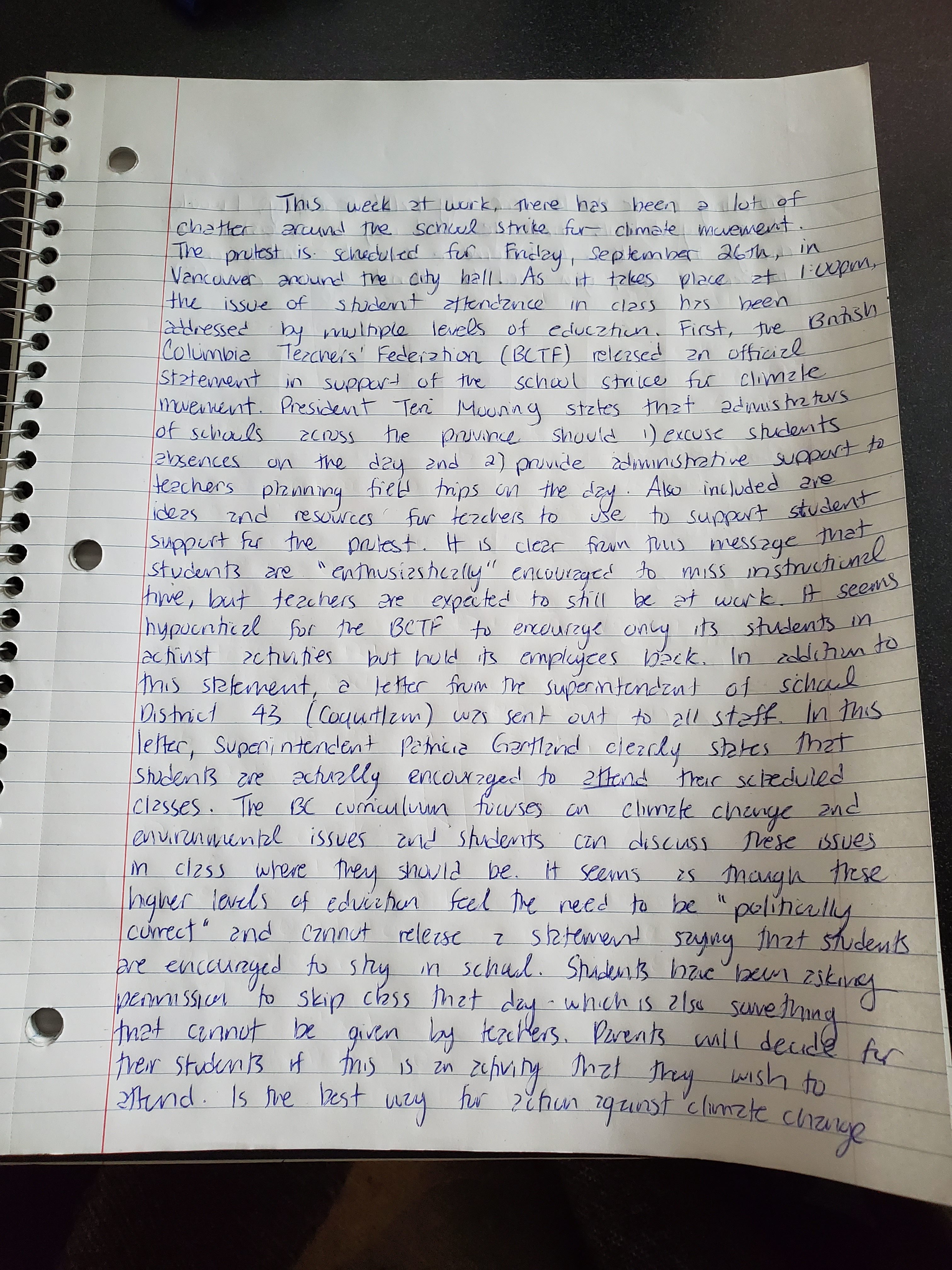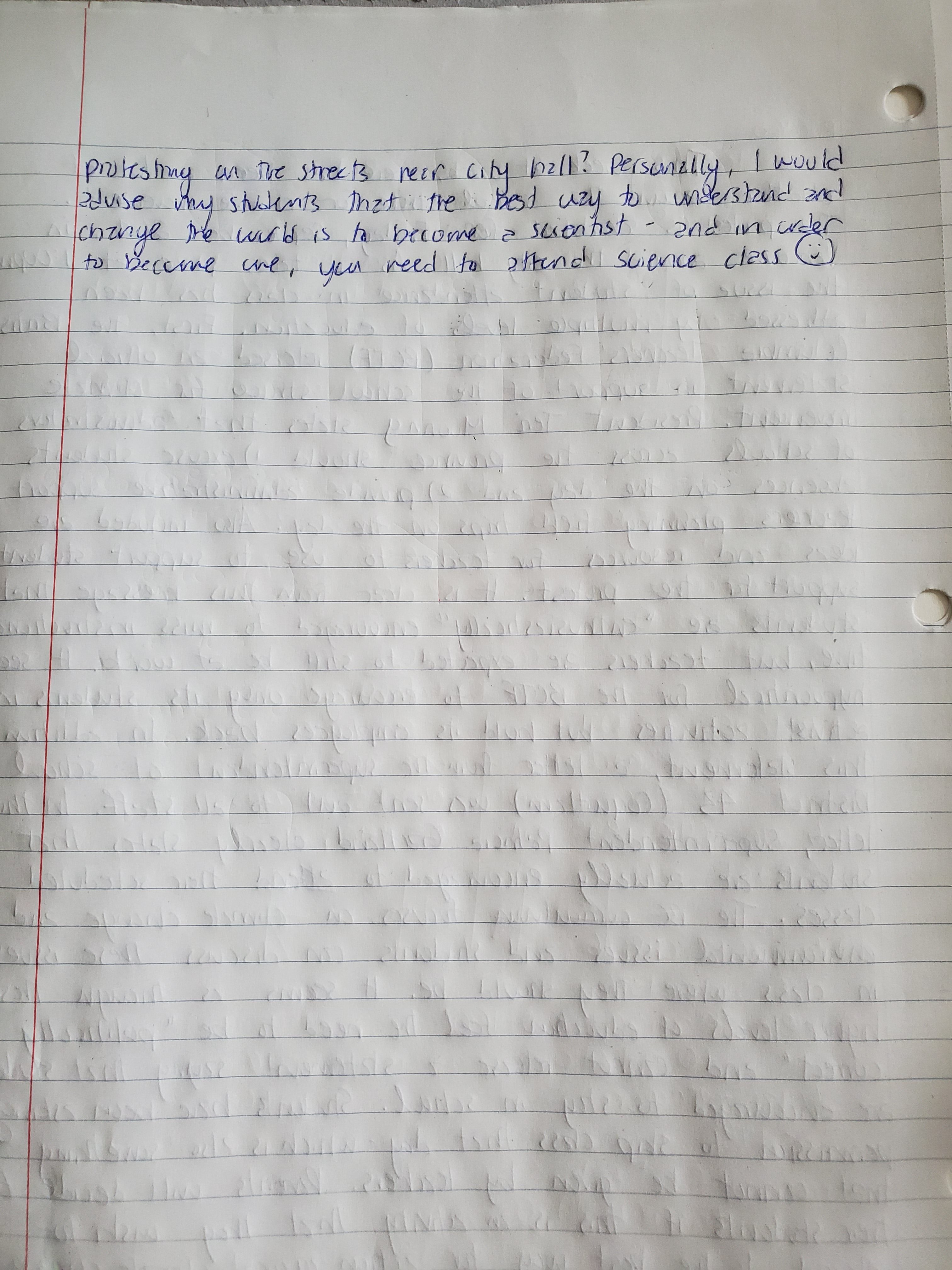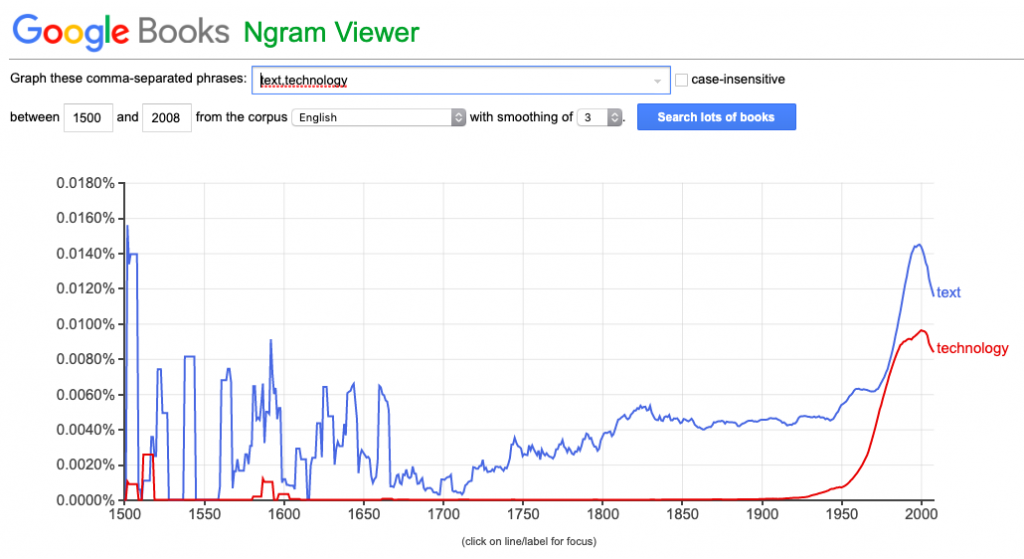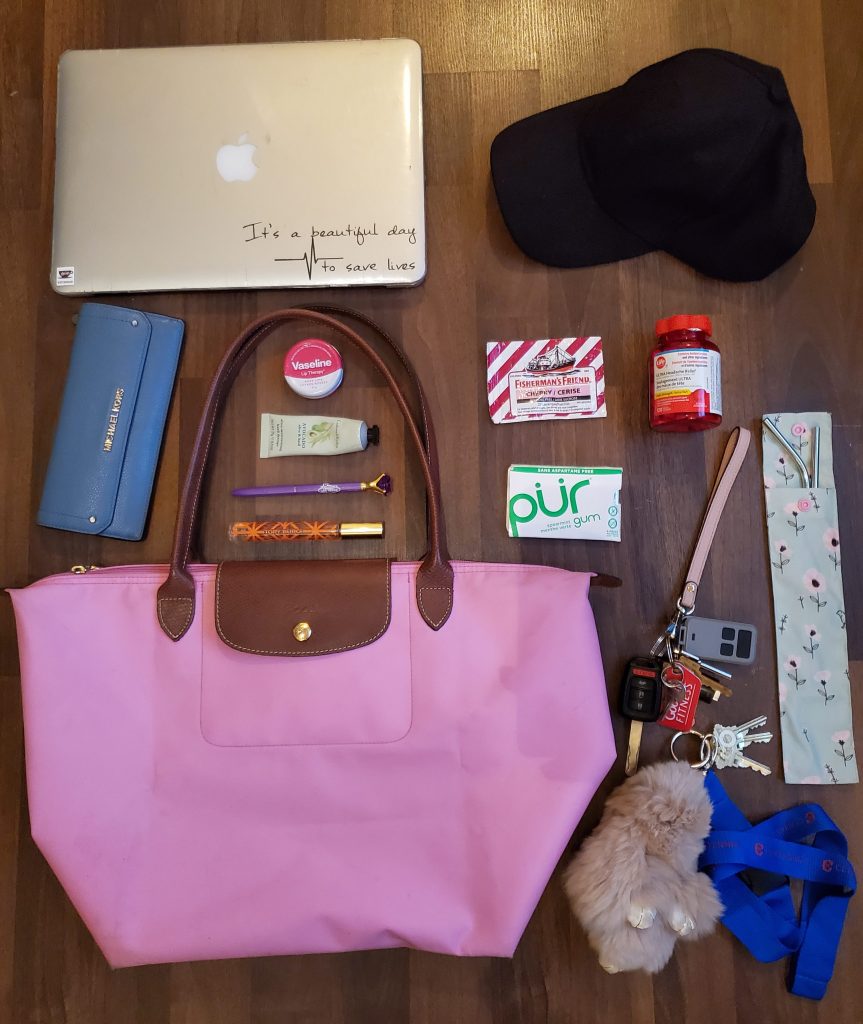

I normally type everything I need to in my day- whether it’s on my laptop or on my phone. This task was surprisingly difficult, because I did not realize how much I had weaned away from handwriting over the years. Everything for school work was written by hand up to the end of highschool, but typing became much more integral in my life starting with my undergrad. Today, I rarely write anything by hand- and when I do, they’re short comments or check marks when marking students’ assignments. I found my hands cramping up after a while and my recently done nails were digging into my palms, making the experience uncomfortable. I used a pen for my writing and did not have to edit any errors- however, if I had made a mistake, I would’ve had to use white-out. This would leave a mark of my mistakes and errors, whereas in typing, there is no trace of this left in the final product. For me, the most significant difference was the speed in which my thoughts could be produced into text. I’m much faster with typing and I got frustrated at times because I would forget what I wanted to write next as my thoughts were running faster than I could write. This is important for me, because I tend to forget things often- that I can translate all my thoughts into text before they’re gone. Definitely pro-typing.

